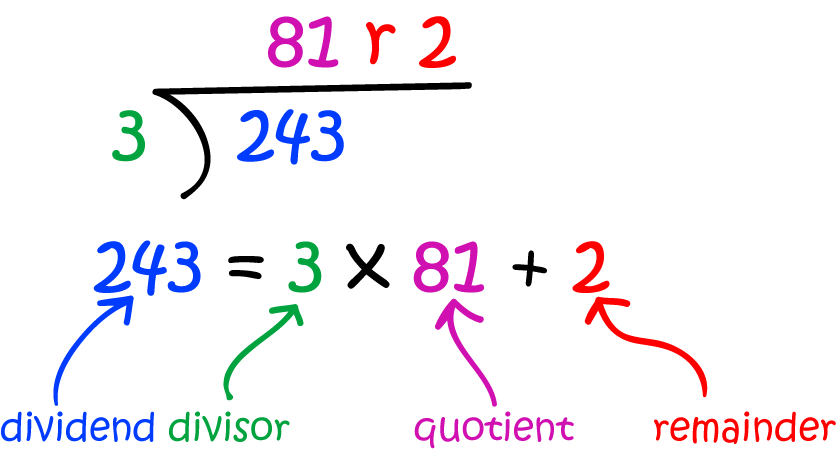Math Definitions - Letter Q
Chapters
Quotient-Remainder Theorem
Definition of Quotient-Remainder Theorem

The quotient-remainder theorem is a result about arithmetic that tells us when we divide an integer \(n\) by a positive integer, \(d\), you can find unique integers \(q\) (the quotient) and \(r\) (the remainder) such that \(n = dq + r\) and \(0 \leq r
For example, when \(n = 17\) and \(d = 5\), \(17 = 5 \times 3 + 2\). So, the quotient is \(q = 3\) and the remainder is \(r = 2\).
In the example on the left, \(q = 81\) and \(r = 2\).
The quotient-remainder theorem is what makes our algorithm for long division work.
Description
The aim of this dictionary is to provide definitions to common mathematical terms. Students learn a new math skill every week at school, sometimes just before they start a new skill, if they want to look at what a specific term means, this is where this dictionary will become handy and a go-to guide for a student.
Audience
Year 1 to Year 12 students
Learning Objectives
Learn common math terms starting with letter Q
Author: Subject Coach
Added on: 6th Feb 2018
You must be logged in as Student to ask a Question.
None just yet!